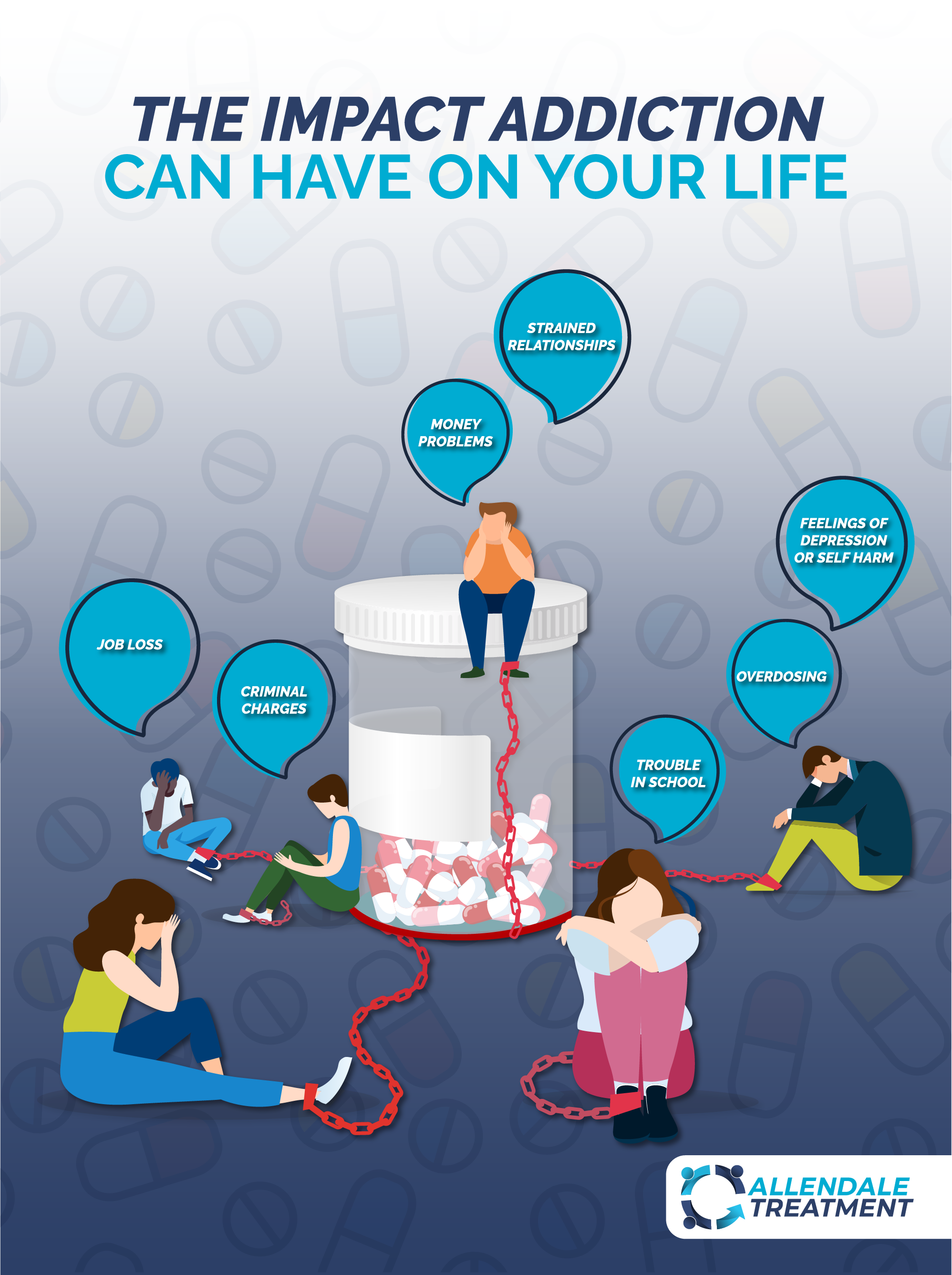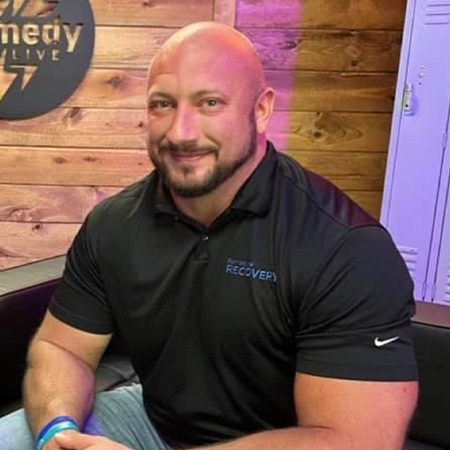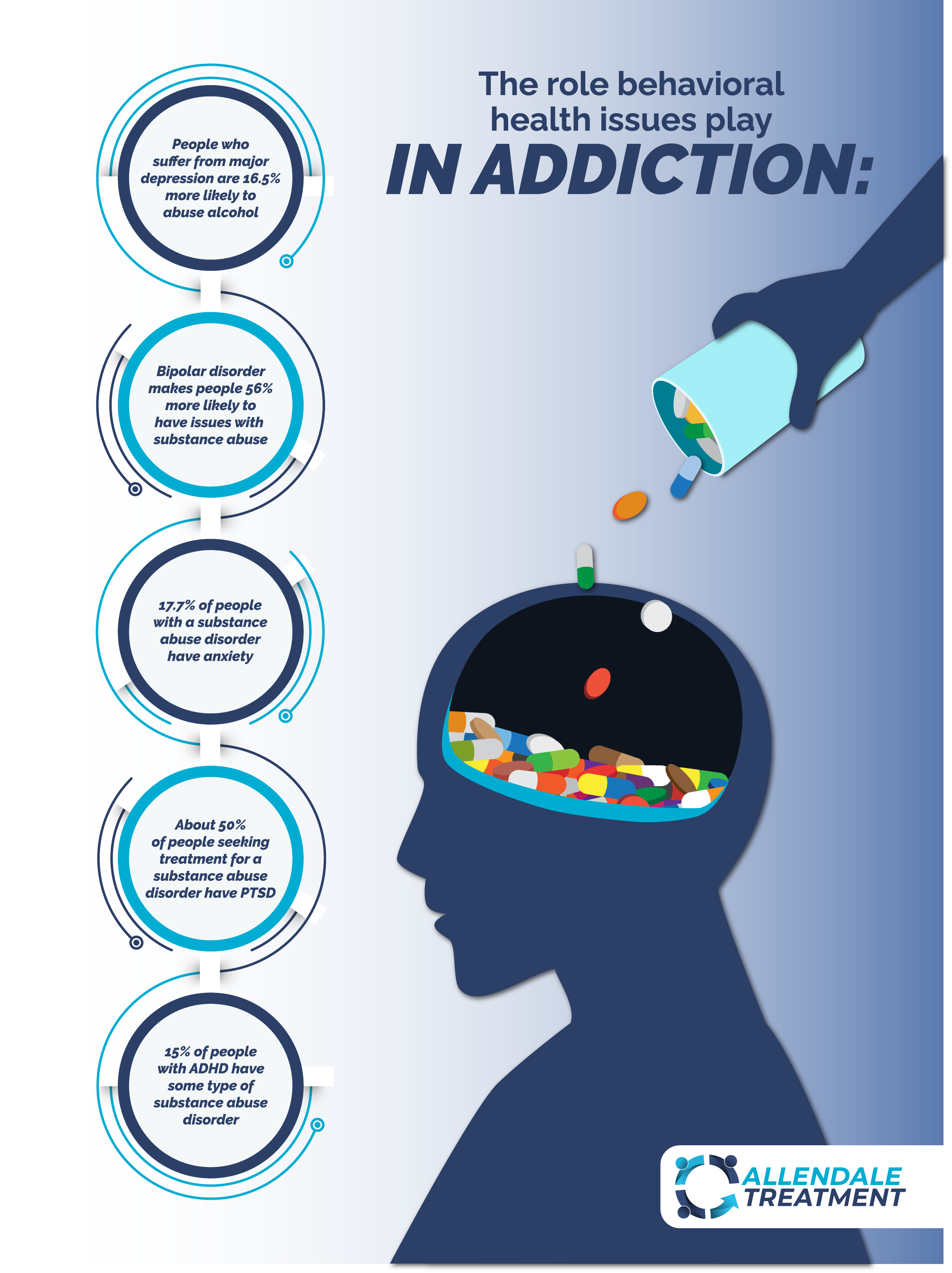Breaking Down Barriers to Addiction Treatment
Breaking Down Barriers to Addiction Treatment
Substance abuse has become an epidemic in the United States but the number of people who receive treatment is more alarming. While 21.2 million Americans suffer from a drug or alcohol addiction, only 11% will receive treatment.
Updated: 2023
Written by: Allendale Treatment
If you or anyone you know are struggling with addiction, call (833) 338-6946 to speak with a professional.
The reason for this low percentage is complicated and varies for each person but when people don’t receive treatment for their addiction, they can experience trouble with law enforcement, broken relationships and health complications that can be life-threatening.
To effectively help people struggling with addiction receive treatment, it’s important to understand the barriers that cause them to delay or put off recovery.

Loss of Employment
A common concern among people struggling with substance abuse disorders is that it could have a negative impact on their employment. They worry that taking time off from work to enter an inpatient rehabilitation facility could put their job in jeopardy. A lot of employers now view treatment for substance abuse as a behavioral health issue and will let employees take sick time or a leave of absence to get the treatment they need.
Some employees may qualify for up to 12 weeks of unpaid, job-protected leave under the Family and Medical Leave Act (FMLA) and there are laws that protect people with substance abuse disorders from workplace discrimination, particularly from getting fired under the Americans with Disabilities Act (ADA).
Nate Moellering, a community outreach coordinator at Allendale Treatment and Fort Wayne Recovery says that job loss is a typical reason he hears from people hesitant to enter an addiction recovery program.
Moellering says that another reason why people struggling with addiction may hesitate to seek treatment is that they feel that as long as they are able to show up to work every day means they don’t have a problem but this is a common misconception.
“They may be functioning on a surface level and going to work every day but as far as being present emotionally and taking care of themselves, they are not able to fully function because of their addiction”
“They may be functioning on a surface level and going to work every day but as far as being present emotionally and taking care of themselves, they are not able to fully function because of their addiction”

Nate Moellering
Community Outreach
Limited Access to Treatment
A lack of access to substance abuse treatment can also be a major barrier to people, especially those who live in rural areas and may have to travel long distances to receive substance abuse treatment.
“In some parts of the country, patients have nowhere locally available to access effective treatment,” says Sarah Wakeman, MD, medical director for the Massachusetts General Hospital Substance Use Disorder Initiative and an assistant professor of medicine at Harvard Medical School.

Treatment
Treatment for alcohol addiction is crucial for young people in rural communities who use alcohol at a higher rate than young people in urban areas. People between the ages of 12 to 20 years old who live in rural areas are also more likely to engage in risky alcohol-related behaviors – including binge drinking and driving under the influence of alcohol compared to people who live in urban areas in the same age group.
When treatment is available for alcohol or drug abuse in rural communities, it’s likely to only utilize medications to treat substance abuse disorders instead of a dual-diagnosis approach which uses both medication and therapy to treat the underlying causes of the addiction.
Tommy Streeter, a community outreach coordinator for Allendale Treatment and Fort Wayne Recovery says that treating behavioral health conditions is crucial in achieving sobriety. “One of the things I didn’t want to do was admit that I needed to address my underlying mental health issues which included depression and social anxiety. Even when I was able to stop using drugs those issues were still there.”
Unfortunately, socioeconomic status can also present itself as a barrier as the social determinants of health (SDoH) play a critical role in whether people have the resources to treat and survive their addictions in both rural and urban communities.
Being Labeled an Addict
People may feel that once they enter a detox facility, it could damage their reputation with family and friends and this stigma can be another barrier to receiving treatment. The word addict can bring forth negative thoughts of a person who is unemployed and homeless even though 70% of people with a substance abuse disorder are employed.
It’s not uncommon for someone struggling with addiction to feel shame and they are more likely to isolate themselves from loved ones, especially if they don’t have anyone to talk to who can relate to what they’re going through.
The feeling of being less of a person can fuel drug and alcohol use and without seeking treatment can lead to a vicious cycle that can be hard to break from.

Moellering says that being around a group of people who can empathize and understand what they’re experiencing is one of the many benefits of getting treated for an addiction. “Being around like-minded people who have similar goals and who have been where you have, is an essential part of breaking the cycle of addiction.”
They may also be worried about being labeled as a failure if they have to temporarily leave their spouse or children to receive treatment in an inpatient facility but Moellering says that if they are misusing drugs or alcohol, they are already not going to be emotionally available to their family.
“If we have pain and we don’t do anything about it, then we’re just transferring to everyone around us which can cause even more damage to family dynamics,” says Moellering.
Why Treatment Matters
While people may find it challenging to break down these barriers, the best chance they have of recovering from their addiction is by completing a substance abuse rehabilitation program. In 2020, 92,000 people in the United States died from a drug-induced overdose and many of these people never received treatment.
While it can be hard to start an addiction treatment program, Streeter says that it can save their life. “No one is ever ready to take the first step to overcome their addiction but one of the sayings that I always think about is that the cemeteries are full of people who were going to get help tomorrow so there’s no time like the present to start recovery,” says Streeter.
If you or anyone you know are struggling with addiction, call (833) 338-6946 to speak with a professional.

